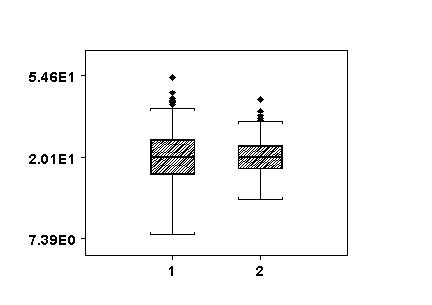|
STA
6166 UNIT 1 Section 2 Exercises
|
| Welcome | < | Begin | < | < | Unit 1 Section 1 | > | Section 3 | |||||
Unit 1 Section 2 Exercises
You can choose to work some or all of the problems listed below. We recommend that you at least work the problems listed in your major area of interest. This is a good time to start practicing the use of the computer for helping with your data analysis. Most of this work can be easily accomplished in the Minitab and SPSS and Proc Insight in SAS. With a little practice this can also be easily done in SPlus and R. The graphs, like side-by-side Box Plots may be more difficult to construct in Excel or Quattro Pro. Exercise answers here.
| General Questions |
|
|
Using the data from Problem 3.65, page 112 in Ott and Longnecker, compute the following statistics. The transmissivity values are transformed by first taking their natural (base e - ln) logarithms (you will need a calculator or computer for this). We will refer to this new (derived response) as the ln transmissivity.
With these statistics answer the following.
|
|
|
Using the data from Problem 3.55, page 108 in Ott and Longnecker, compute the following statistics.
With these statistics, answer the following.
|
|
|
In a study of the accumulation of polychlorinated biphenyls (PCBs) in humans after chronic environmental exposure, Patterson, et. el. (1994, Env. Health Persp., 102, Supp 1, p195-204) reported the following observations for parts per trillion of PCB (lipid adjusted) in adipose tissue from the following two groups (gender unspecified). Caucasians: 56.7,44.5,48.2,96.5,91.0,34.2,154.0,34.5,41.8,66.4,29.5.49.0,54.7 African-Americans: 36.7, 174.0, 118.0, 69.9, 62.2, 112.0, 42.0, 67.7, 59.5, 36.4, 62.4, 109.0, 84.0, 35.6, 61.6 Using these data compute the following statistics.
With these statistics, answer the following.
|
|
|
Using the data from Problem 3.53, page 108 in Ott and Longnecker, compute the following statistics.
With these statistics answer the following.
|
